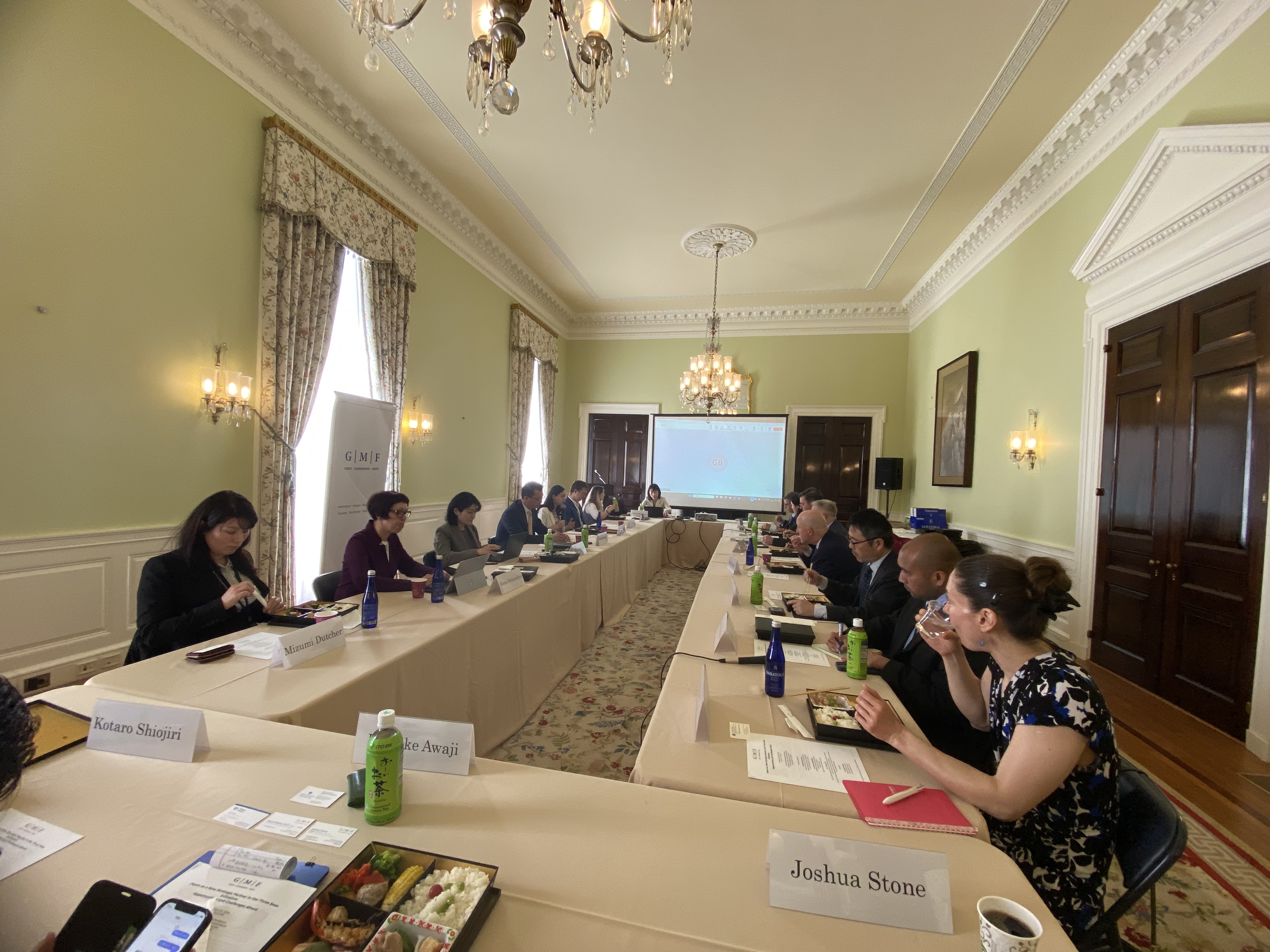Japan as a New Strategic Partner in the Three Seas Initiative
On March 31, GMF Indo-Pacific partnered with the Embassy of Japan in Washington, DC, to convene a roundtable, “Japan as a New Strategic Partner in the Three Seas Initiative: Opportunities and Challenges Ahead”. Senior Fellow for Japan Dr. Sayuri Romei moderated the event at the embassy, which featured presentations from Prof. Beata Bochorodycz of Adam Mickiewicz University, Prof. Atsuko Higashino of Tsukuba University, and Anthony Kim of The Heritage Foundation.

In April 2024, Japan joined the Three Seas Initiative (3SI) as a strategic partner, alongside the United States and the EU. The 3SI was established in 2015 with the objective of strengthening connectivity and reducing disparities in Central and Eastern Europe (CEE) and the Baltic states. The initiative promotes the development of infrastructure in the energy, transport, and digital sectors in the region surrounded by the Baltic Sea, the Black Sea, and the Adriatic Sea. The war in Ukraine has highlighted the relevance of this initiative and underscored the frail regional infrastructure and CEE’s economic dependence on Russia. As it becomes increasingly clear that the security and stability of the Euro-Atlantic and the Indo-Pacific regions are inseparable, Japan is compelled to serve as an active partner in the 3SI as its role is also closely connected to the quality of assistance and support to Ukraine. Japan’s engagement with CEE countries has so far lacked dynamism, as Tokyo’s foreign policy has been focused mainly on the United States and China. As CEE countries realize that the economic benefit China offers is less than expected, Japan is in a good position to rekindle the relationship.
Bochorodycz offered an assessment of the 3SI from a European perspective and commented on Japan’s potential role in this initiative. She noted that “the 3SI has been a success so far, but its further development will require strong political leadership, broad business involvement, as well as local and civic engagement. Japan's participation as a strategic partner will greatly contribute to regional infrastructure development but also will allow to counterbalance Russian and Chinese influences in this part of Europe. The 3SI member states can also serve for Japan as a gateway to the post-war reconstruction of Ukraine, which has become the associated participating member.”
Higashino elaborated further on Japan’s role. She commented that "Japan has already demonstrated its willingness to participate in the future reconstruction process of war-torn Ukraine, and the 3SI will likely serve as a vital forum for Japan in this endeavor. Through the 3SI, Japan would be able to learn from the experience of infrastructure building in the 3SI region, as well as from Central and Eastern European countries, and how such knowledge could—and could not—be applied to Ukraine. However, the long-rooted problem in Japan is that the 3SI remains largely unknown in Japan, even among policymaking communities. The significance and the potential of the 3SI should be understood by wider audiences in Japan.”
Kim offered a US perspective on the topic and emphasized the importance of cooperation among the strategic partners and the engagement of the private sector. He said that “continuing and elevating support for the Three Seas Initiative would be smart, timely, and strategic. Japan’s strong interest and participation in the Initiative is thus more than welcome. Fundamentally, the Three Seas Initiative is and should be a practical platform for attracting private sector investors. The initiative’s success will be certainly enhanced private partnerships reinforced by Japan’s strategic and pragmatic engagements with region as well as the United States.”
GMF will publish later this spring an edited volume on this topic featuring six papers by experts from Europe, Japan, and the United States.
